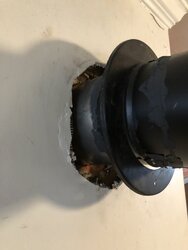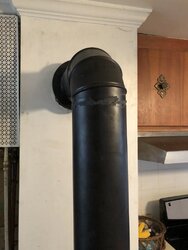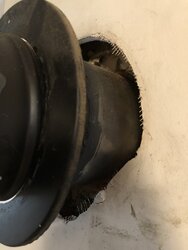


Hello all, new woodburner here from maryland trying to get some info on the safe install of a woodstove in my kitchen.
House is circa 1908, previous owner had the stove vented into the unlined interior chimney which also had a water heater vented to it aswell (scary!). I’ve sinced moved the water heater and patched it’s vent hole with cement, and thanks to the info here, installed a flexible stainless chimney liner. My question now is how to properly install the piping from the stove as clearances are tight.
I’ve looked at “thimbles” but they seem to be for something other than my application. Maybe “class a” pipe? The previous owner used the stove for years this way, and indeed the drywall around the stove pipe does get warm (but not too warm to hold your hand on it)
Thanks,
Nick
Last edited by a moderator:

